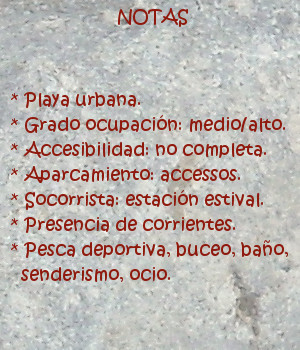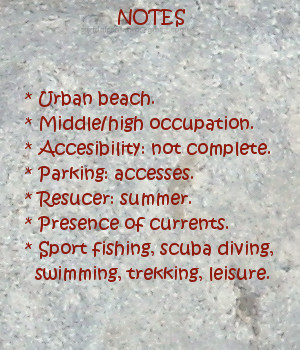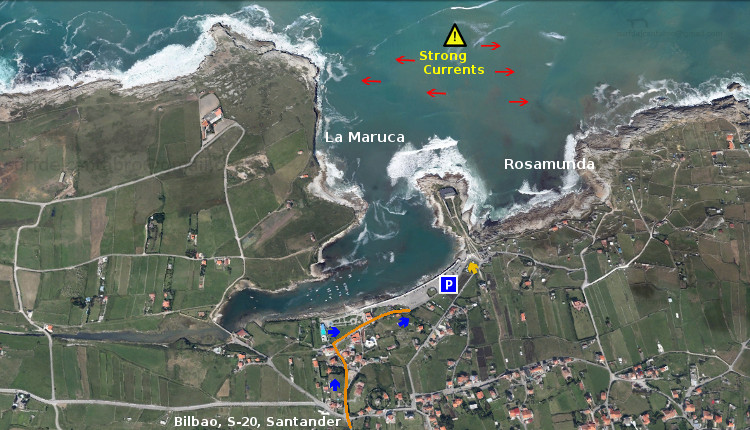La Vaca, lugar
![]() La Vaca es la ola más grande de Cantabria. Superando con facilidad los 5 metros de altura, ha registrado valores superiores a los 10 metros y en competición las olas surfeadas alcanzaron los 7 metros.
La Vaca es la ola más grande de Cantabria. Superando con facilidad los 5 metros de altura, ha registrado valores superiores a los 10 metros y en competición las olas surfeadas alcanzaron los 7 metros.
Situada en la costa norte de Santander, su localización se emplaza entre la playa de El Bocal y los acantilados de Las Canteras de Cueto. Su oleaje, superior al resto de olas que existen en la zona, se debe a varios factores. La fuerza y tamaño del Mar Cantábrico en esta parte de la costa son importantes, junto con las características del fondo local contribuyen a crear un spot único. La sucesión del fondo fragmentado y rocoso, que llega hasta Las Canteras con una pendiente del 65%, provocan la proyección de las olas y la concentración de la energía. El sistema compuesto por todos estos factores produce olas de tamaño mayor a los registrados en los spots cercanos. El fondo quebrado traslada su ser a la ola esculpiendo la superficie de la onda con irregular forma.
Es La Vaca una ola gigante, potente y peligrosa cuyos fondos de roca se encuentran a apenas metro y medio de la superficie del agua con la bajamar. Los acantilados que la rodean dificultan el acceso de los surfistas y a su vez componen un mirador natural con vistas panorámicas a la gran ola y esta parte salvaje y monumental de la costa Quebrada. Su acceso, a través de una senda pública, conducirá al paseante inquieto a descubrir la ola, el entorno y el Mar. Acompañados, a cada paso, por las vacas que pastan libres a lo largo del recorrido con mirada curiosa mientras suena de fondo la natural relación entre el Mar Cantábrico y la costa.

La Maruca, place
![]() La Vaca is the biggest wave of Cantabria. It can overcome 5 meters of height, it has been registered values over 10 meters and in competition the navigated waves reached 7 meters.
La Vaca is the biggest wave of Cantabria. It can overcome 5 meters of height, it has been registered values over 10 meters and in competition the navigated waves reached 7 meters.
Placed on the north coast of Santander, its location is placed between the beach of El Bocal and the cliffs of The Quarries of Cueto. Its surge, bigger than the rest of the waves that exist in the zone, owes to several factors. The force and size of the Cantabrian Sea in this part of the coast are important, together with the characteristics of the local bottom which help to create the original spot. The succession of the fragmented and rocky bottom, which comes up to The Quarries with a slope of 65 %, provokes the projection of the waves and the concentration of the energy. The system composed by all these factors produces waves of size bigger than the registered ones in the nearby spots. The broken bottom translates its nature to the wave and sculpts the surface of the wave with irregular form.
It is La Vaca a giant, powerful and dangerous wave which marine rocky bottoms are to scarcely meter and a half of the surface of the water in the low tide. The cliffs that surround it impede the access of the surfers and in turn them compose a natural viewing-point with panoramic to the great wave and this wild and monumental part of the Quebrada Coast. Its access, across a public path, will drive the curious walker to discover the wave, the environment and the Sea. Accompanied, on every step, with the cows that graze free along the tour with curious look while the natural relation between the Cantabbrian Sea and the coast sounds around.







